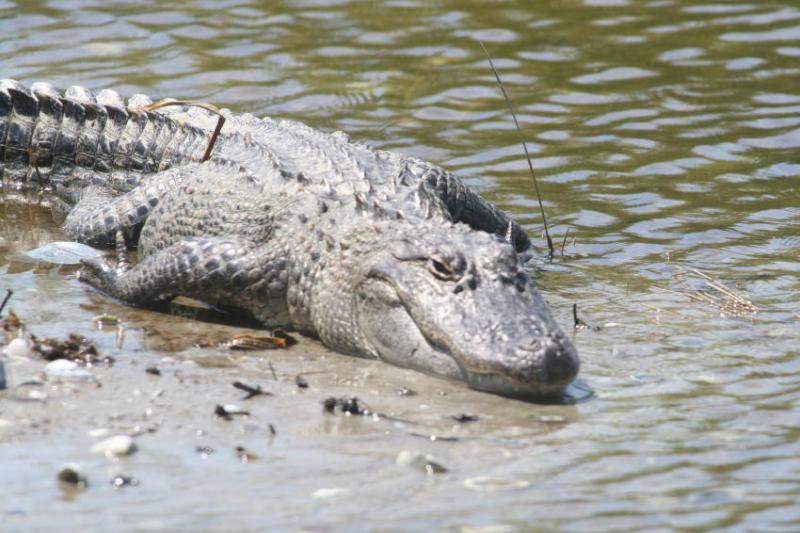American Alligator: The Ultimate Bass Voice
By Dave Hanks
While walking beside a salt water marsh in Florida, I was startled by a loud, deep, resonate roar. It sounded much like an upset dairy bull, but there were no bovines anywhere near. Much to my surprise, it came from a clump of vegetation that held a large lizard-like animal – the American Alligator. Although startled, I was very glad that he had announced his presence.
This large reptile grows at the rate of a foot a year and can reach 28 feet and 450 to 500 lbs. Its tail is half its body weight and is very powerful. A swat from it could cause serious problems. Elevated eyes allow it to submerge and yet scan the surrounding area. Motionless in the water, it can be mistaken for a log. It can also be well camouflaged as it lies along a path in the available vegetation.
The Beaver is the master engineer of our fresh water habitat, but the Alligator fills the same niche in the swamp – making water holes that are also utilized by other species. It digs a hole with an opening below the water line, but then sloping upward to a dry den. The Alligator can always seek refuge here.
Mating takes place in April or May. The female will lay up to 60 eggs in a heap of mud and vegetation, and the heat generated by the sun incubates the eggs. This “best” of reptile mothers rips open the nest when the hatchlings “peep” and then carries each one to the safety of the gator hole.
Once endangered, this species has made a remarkable recovery. The increase in Alligator farms, for their hides, has helped bring them back from the brink.
Whenever we are in coastal Texas, we seem to stumble upon these animals on a somewhat regular basis.
(Resting in the morning sunlight)
|
